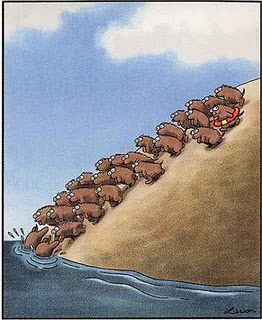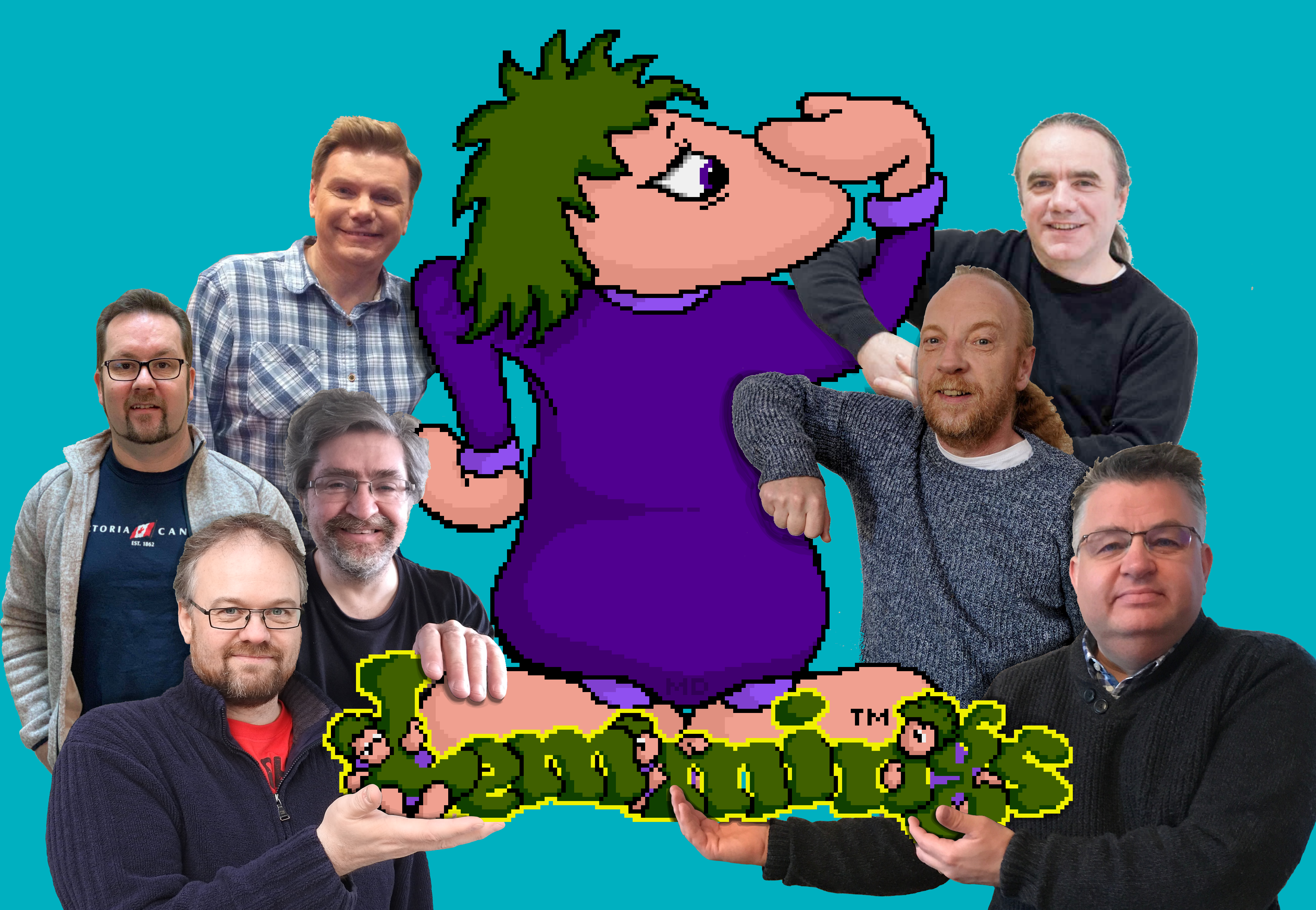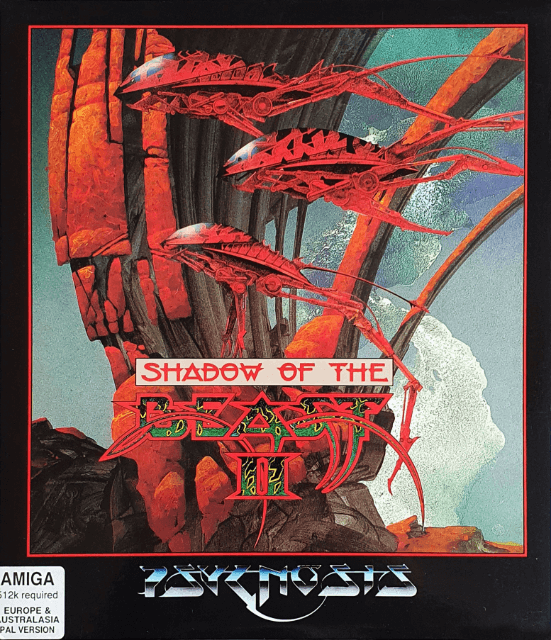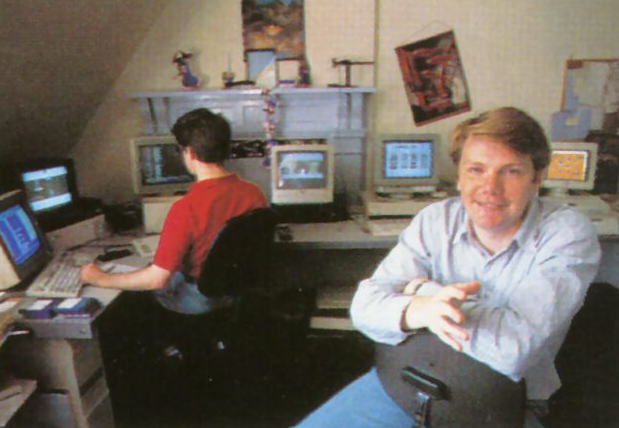While I was away on holiday, Steve took over doing level scripting for Shadow of the Beast – and probably saved my bacon if truth be told. I love the tech in games, but I hate scripting stuff. It’s mind numbingly boring, and I was seriously dragging my heals on SotB. I left for a 2 week holiday, and Steve managed to script pretty much the whole game in that time. I went from feeling like I needed to kill myself, to feeling I might actually finish the feker.
It would still take a good year to complete, but that’s another story…. While I was away, a magazine came up and took some pictures, so Steve posed and pretended to be me. The picture above though is very interesting though, not only does it give a nice snapshot into 1990/91 game development, it’s also got some great insights into converting games from one platform to another.
It’s also worth while saying that Dave got this picture taken in my room, because at the time it was the most impressive with 6 monitors all to help with the port.
So I’m going to enlarge the image, and tag a whole heap of items and list what they are….
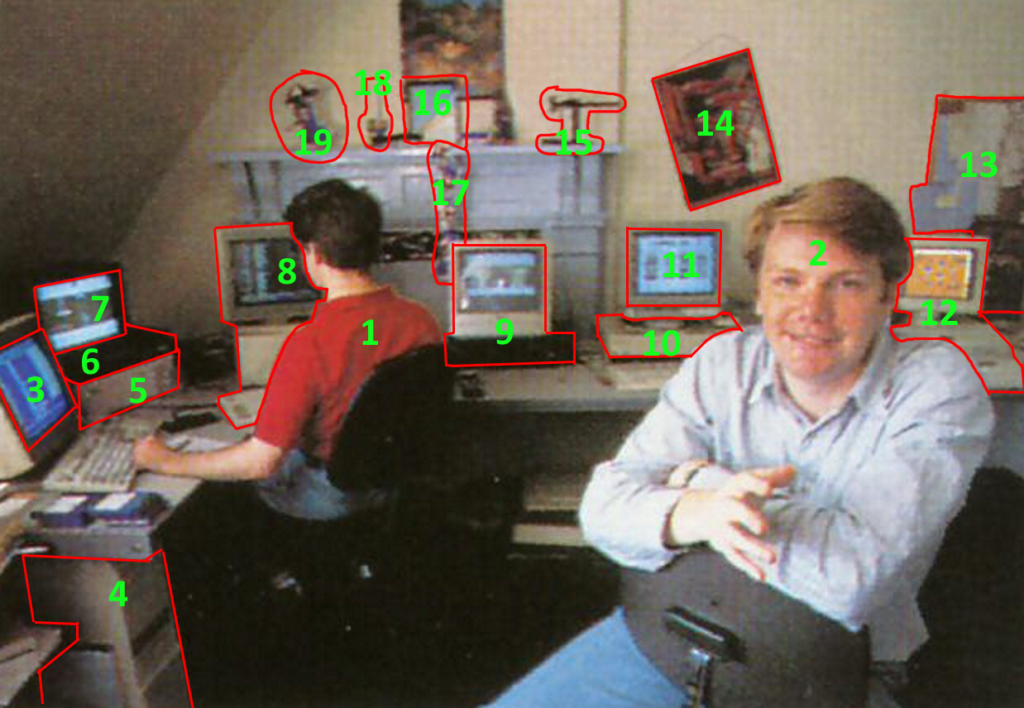
- Steve Hammond – pretending to be me.
- Dave Jones
- This blue screen that is showing, is the debugger I wrote for the PC Engine. The debugger that came with it was a command line prompt thing – much like the old PC “debug.exe”, and was worse than useless, so I hacked the ICE unit comms in my spare time, and wrote a whole new debugger around it in Turbo Pascal 7. Brian Watson helped and gave me some expression evaluation code, and I’ve used that same code ever since for over 30 years now, in tools and assemblers.
The comms code also went into a sound effect editor later, where I could draw wave forms on the PC, and it would play back on the PC Engine. The PC Engine could define a 32 byte wave, and play that, so I did a simple graph editor, and then squirted it over and played it. The manual said to play instruments into an oscilloscope and then trace the waves – we never bothered doing that, obviously.
We then sampled these sounds back onto the Amiga, and Raymond Usher then used a tracker to make the music for it PC Engine Ballistix – which we were also doing. Scott Johnston had written his own Amiga MOD player for Hired Guns, and I converted over that to work on the PC Engine.
If you’re interested in what the debugger was like, look at my #CSpect emulator, it’s based on the same generic layout and system. - My 386 Tower PC
- The PC Engine dev kit. This was an ICE unit that plugged directly into a US retail TG 16, and could start/stop and trace with utter precision. Most 3rd party devkits for the like of SNES forced you to do a call each frame so they could stop the code and debug, but this didn’t It could just stop the CPU in it’s tracks whenever you wanted, even if you were stuck in a loop. Lovely bit of kit.
- A US Turbo Graphics 16.
- NTSC TV
- I’m not sure what this is. I “seem” to remember this was just a PC that I used to inspect the Amiga source code while porting, but I’m not 100% sure. Having 2 screens to compare with, was always helpful.
- This was a VCR with a video of the full game. I could look at each level and this was really what I used to port. I never really used the source code much, I just copied what I saw on the video.
- Dave’s old Amiga 1000.
- Deluxe Paint running, and the Beast graphics – or the game running.
- My old 286 PC that I used to write Ballistix and Blood Money on the C64 using the PDS development system.
- My notice pin board. This followed me around for my whole time while at DMA. You can probably see it in other pictures! I put all manner of things on this over the years, usually stuff I needed day to day to help remind me about memory layouts, hardware registers and the like.
- Shadow of the Beast 2 poster – free from somewhere no doubt… (see below)
- TV Arial. Because I had a VCR – which had a TV tuner, I could plug in an Arial and get a TV signal…
- The Far side Lemmings picture… (see below)
- We got a strip of “floaters” on a roll for shops, and I cut out a load and stuck them together and did this floating “chain”
- This was a Lemming “dangler”. It would stick to an edge and then curve over and dangle. This is the one I copied to draw the Lemming on the End Screen. (see below)
- A floater cardboard stand up for a shop.
Lastly… I have no idea what the poster right at the back is….
